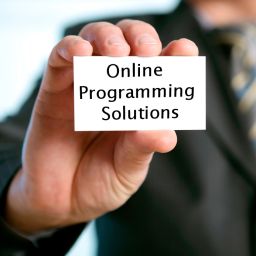What is a Computer Virus?
It is an application which is created by intelligent minds but not for the good service for the society.
Computer viruses are special programs that will be hidden and will be intruded into the computer with the help of some autorun files.
What is an autorun.inf file?
It is a file which is automatically invoked when a particular device gets connected to the system which supports autorun facility. Most of the commercial CD/DVD provides the facility of autorun to make the application user friendly.
In case of CD/DVD when the disk is inserted the program should be invoked will be mentioned in the autorun.inf file which is stored in that particular disk.
Viruses comes from ?
It is actually an unpredictable thing that from where it comes to the system, up to some extend it is predictable most of the virus programs comes into system through pen drives and from the internet.
How to identify a virus ?
1.Many of them will not be having an iconic image.
2.Many of them will be an executable file or other fileswhich are affected by virus.
3.Virus applications name will be some times special like (new folder.exe,123.exe).
4.Virus applications size will be most probably less than 1 MB.
How to prevent virus applications and to recover from virus attacks?
1.Disable the autorun facility on usb and cd/dvd rom in services.msc.
2.As mentioned earlier viruses are hidden in normal widows operating system it is difficult to see the virus file so use any applications that enables us to view the hidden files in the system( i prefer winrar ).
3. Try to open the drive or files in explore mode try to avoid double clicking on the drive.( if you feel that your computer is attacked by virus)
4. Always keep a fresh backup copy of your drive where the operating system is installed.(with all the motherboard drivers and software installed i personally prefer Norton ghost)
5. Remove unwanted applications from startup(Run->msconfig->startup)
6. Don't open your pen drive when it's icon image is changed. it is changed when viruses attacks the drive.
7.if you are not disabled your auto run facility then disable the auto run by pressing down the shift key when the device is plugged in. By doing so auto run will not be get activated.
8. if you are identified any virus programs by viewing it with some applications like winrar try to delete it permanently by shift+delete.
9.Does not go through unsecured sites.
10. Log in to your computer in safe mode. restart the system and after the manufactures logo press F8 for advanced boot option and choose safe mode or safe mode with networking.
{A good practice is to backup your OS installed drive along with full settings to restore your system settings after any kind of virus attacks. for backups use Norton ghost or use normal windows backup Start->programs->Accessories->System tools->Backup.)

It is an application which is created by intelligent minds but not for the good service for the society.
Computer viruses are special programs that will be hidden and will be intruded into the computer with the help of some autorun files.
What is an autorun.inf file?
It is a file which is automatically invoked when a particular device gets connected to the system which supports autorun facility. Most of the commercial CD/DVD provides the facility of autorun to make the application user friendly.
In case of CD/DVD when the disk is inserted the program should be invoked will be mentioned in the autorun.inf file which is stored in that particular disk.
Viruses comes from ?
It is actually an unpredictable thing that from where it comes to the system, up to some extend it is predictable most of the virus programs comes into system through pen drives and from the internet.
How to identify a virus ?
1.Many of them will not be having an iconic image.
2.Many of them will be an executable file or other fileswhich are affected by virus.
3.Virus applications name will be some times special like (new folder.exe,123.exe).
4.Virus applications size will be most probably less than 1 MB.
How to prevent virus applications and to recover from virus attacks?
1.Disable the autorun facility on usb and cd/dvd rom in services.msc.
2.As mentioned earlier viruses are hidden in normal widows operating system it is difficult to see the virus file so use any applications that enables us to view the hidden files in the system( i prefer winrar ).
3. Try to open the drive or files in explore mode try to avoid double clicking on the drive.( if you feel that your computer is attacked by virus)
4. Always keep a fresh backup copy of your drive where the operating system is installed.(with all the motherboard drivers and software installed i personally prefer Norton ghost)
5. Remove unwanted applications from startup(Run->msconfig->startup)
6. Don't open your pen drive when it's icon image is changed. it is changed when viruses attacks the drive.
7.if you are not disabled your auto run facility then disable the auto run by pressing down the shift key when the device is plugged in. By doing so auto run will not be get activated.
8. if you are identified any virus programs by viewing it with some applications like winrar try to delete it permanently by shift+delete.
9.Does not go through unsecured sites.
10. Log in to your computer in safe mode. restart the system and after the manufactures logo press F8 for advanced boot option and choose safe mode or safe mode with networking.
{A good practice is to backup your OS installed drive along with full settings to restore your system settings after any kind of virus attacks. for backups use Norton ghost or use normal windows backup Start->programs->Accessories->System tools->Backup.)













